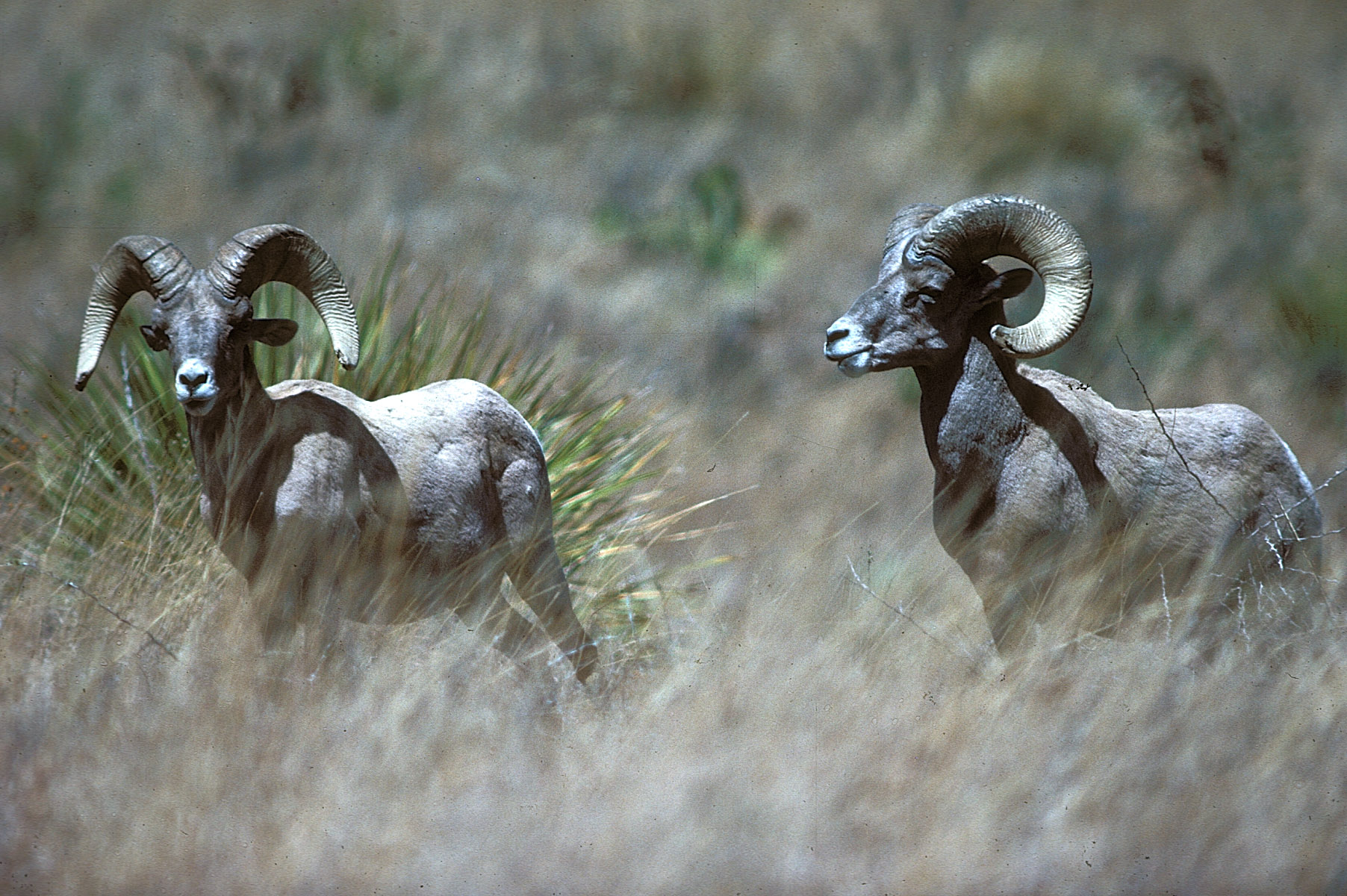Conservation: Bighorn Sheep Restoration, 1

Bighorn Sheep © Texas Parks and Wildlife Department
This is Passport to Texas
In the late 19th century, upwards of 3-thousand native desert big horned sheep roamed the Trans Pecos region of Texas. By the mid-20th century, they were gone.
07— It’s commonly agreed that the introduction of domestic sheep and goats, [with their] diseases, net wire fencing, and unregulated hunting played a big part [in their demise].
Froylan Hernandez is the Desert Bighorn Sheep Program Leader for Texas Parks and Wildlife. He is quick to say, there’s no ill will toward the domestic livestock industry.
06— I’m just merely stating the facts of the Bighorn’s demise. We need to live in harmony with the domestic livestock industry.
Native Texas Bighorn Sheep no longer exist despite active restoration efforts of the species that began in the late 1940s and early 50s.
09— So we started introducing sheep from other states; primarily Nevada, Utah, Arizona, some from Baja California, Mexico. So the efforts started way back when.
Restoration of Desert Bighorn Sheep involves relocation, monitoring, data collection and analysis. The sheep historically appeared in 15 mountain ranges in the Trans Pecos.
07— Our goal is to get them back to the critical habitat – to those mountain ranges, and for them to number about 25-hundred. So, we’re kind of halfway there.
More on Desert Bighorn Sheep Restoration tomorrow.
The Wildlife and Sport Fish Restoration Program supports our series and funds Desert Bighorn Sheep Restoration in Texas.
For Texas Parks and Wildlife…I’m Cecilia Nasti.


 Passport to Texas is a
Passport to Texas is a  Passport to Texas is made available by:
Passport to Texas is made available by: